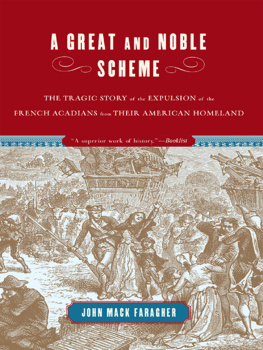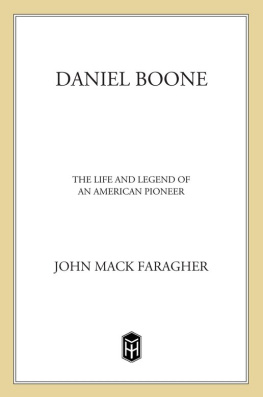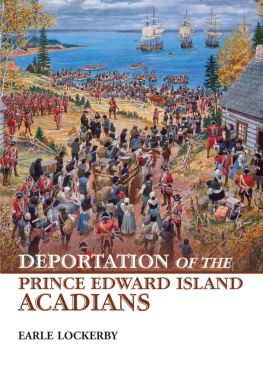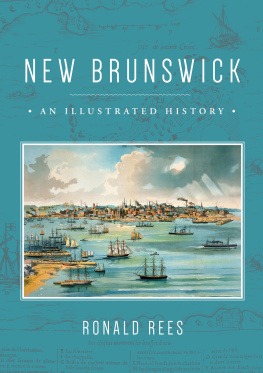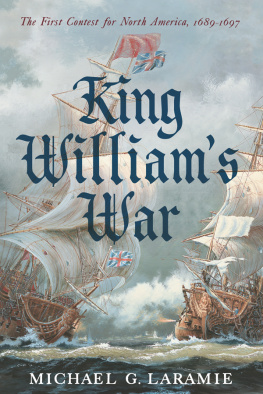THE IDEA FOR THIS book first took shape during a visit my wife and I paid to our daughter, who was attending graduate school in Lafayette, Louisiana. On a memorable Sunday afternoon in November 1995 the three of us drove down Bayou Teche to Longfellow-Evangeline State Historic Site and in the reconstructed Acadian cabin there I first saw the poster Acadian Odyssey, produced by Parks Canada, which details the expulsion of the Acadians. Aside from short discussions in histories of the French and Indian War, boyhood memories of reading Longfellows Evangeline, and the plaintive chorus of the Bands Acadian Driftwood, it was something I knew very little about. In the gift shop I bought Carl A. Brasseauxs little book on the expulsion, Scattered to the Wind, and before bed that night had learned enough to know that this awful episode, so strikingly similar to events of ethnic cleansing in our own time, was something about which I needed to know much more.
Many people and institutions provided support, assistance, and encouragement during the research and writing of this book. First and foremost, I owe a debt of gratitude to Yale University. The grant of a sabbatical leave from teaching in 19992000 gave me the chance to begin the project in earnest, and another leave in the fall of 2003 provided the opportunity to conclude it. The collections of Sterling Memorial Library and the Beinecke Rare Book and Manuscript Library at Yale supplied valuable materials and the staff generously offered their expertise and arranged for the loan or purchase of essential books and archival collections on microfilm. I especially want to thank Nancy Godleski, George Miles, Fred Musto, Margaret Powell, and Suzanne Roberts. Benjamin Parrish, in the Map Collection, helped prepare the original maps. I also benefited from the encouragement of my colleagues in the Department of History and the Program in American Studies, particularly the chairs, Professors Jon Butler and Jean-Christophe Agnew. Without the assistance and support of Victorine Shepard I would not have been able to move ahead with research and writing while performing my administrative duties, and I want to thank her specially.
This project was inspired by the intellectual community of the Howard R. Lamar Center for the Study of Frontiers and Borders at Yale, including my colleagues Howard R. Lamar, Jay Gitlin, George Miles, Gilbert Joseph, and Stephen J. Pitti, together with the senior scholars who have graced us with their presence over the past three years, Robert Utley, Melody Webb, Michael D. Quinn, Gerald Friesen, and Susan Armitage. Graduate students have been an essential part of this community. For what they have contributed I want to thank those who have participated over the past decade, many of whom are now professors and published scholars: Kenneth Orona, Catherine Corman, Elizabth A. Fenn, Raul A. Ramos, Benjamin H. Johnson, Thomas McCarthy, Andrew Lewis, Bettina Drew, J. C. Mutchler, Robert Campbell, Jon T. Coleman, James Kessenides, Michelle Nickerson, Aaron Sachs, Christian McMillen, Denise Bossy, Kristie Starr, Kari Main, Daniel Lanpher, Robert Morrissey, Roxanne Willis, Scott Kleeb, Melissa Stuckey, Angela Pulley Hudson, Karen Marrero, Paul Grant Costa, and Ashley Riley Sousa.
During my sabbatical leave in 19992000 the Huntington Library awarded me a Times-Mirror Fellowship, and during a year of residence the Huntington became my second intellectual home. For their hospitality I am indebted to Robert C. Ritchie, W. M. Keck Foundation Director of Research and Education, and his assistant Carolyn Powell. The Huntington allowed me months of uninterrupted research. But as important, it offered a wonderful group of smart and interested colleagues. In particular I want to thank Stephen Aron, Hal S. Barron, Richard Buel, William S. Deverell, Kathleen M. Donegan, Jonathan Earle, Richard Kaeuper, James Kessenides, Andrew Lewis, Karen Lystra, Charles Royster, Marguerite S. Shaffer, Leslie Tuttle, and the late Martin Ridge.
A number of individuals helped me locate important materials: A. J. B. Johnson and Wayne Kerr, Parks Canada; Brenda Lawson, Curator of Manuscripts, Massachusetts Historical Society; Jonathan Ralton, Historic Winslow House Association; Cynthia Krusell, Historical Research Associates of Plymouth County, Massachusetts; Scott Robson, Curator of the Historical Collection, Nova Scotia Museum; and Ilene Susan Fort, Curator of American Art, Los Angeles County Museum of Art. Michael Jo and Benjamin Johnson assisted me in finding documents at Yale. Paulina Alberto translated important French texts. Mary Litch, computer specialist at Yale, helped prepare digital images for publication.
Several institutions offered me an opportunity to present my work in progress, and the exchanges that took place on those occasions were critical in shaping my thinking. I want to thank the departments of history at the following universities: University of Southern
California; California State University, Northridge; Claremont Graduate University; University of California, Los Angeles; University of California, Riverside; as well as the American Studies Symposium, Program in American Studies, Yale University; the Greater American Histories Conference, the Huntington Library; the Center for Historical Studies, University of Maryland; and the Western History Workshop, Museum of the American West, Autry National Center.
The completed manuscript was read by Stephen Aron, Carl A. Brasseaux, Gerald Friesen, Jay Gitlin, Maurice Basque, George Miles, John G. Reid, and Harry S. Stout. They saved me from many errors and challenged me on many points. Although I did not take all of their advice, I value their criticism and thank them for their care. Maria Guarnaschelli at W. W. Norton edited the manuscript with attention to both the big picture and the fine detail, and the book is immeasurably better as a result. Her assistant, Erik Johnson, arranged for permissions and helped shepherd the book through the various stages of production. The manuscript benefited from the excellent copyediting of Ann Adelman. For connecting me with the fine people at Norton I thank Gerard McCauley, my literary agent and good friend.
My greatest debt is to Michele Hoffnung, my partner and life companion. Together we traveled through the New Acadia of Louisiana and the ancient lAcadie of Nova Scotia and New Brunswick. During those trips she endured my stops at historical markers and used bookstores. Later she put up with the early mornings and the late evenings I spent writing. After the completion of each chapter she listened attentively as I read it aloud. And she gave me the confidence to go on to write the next one.
During the period I worked on this project, Michele and I were blessed with the arrival of two wonderful grandsons. This book is dedicated to them, in the hope that the world they inherit will be a better place than the one described in these pages.
Women and Men on the Overland Trail (1979)
Sugar Creek:
Life on the Illinois Prairie (1986)
Daniel Boone:
The Life and Legend of an American Pioneer (1992)
The American West: A New Interpretive History (2000)
with Robert V. Hine
THE FRENCH COLONIZATION OF lAcadie began in earnest on 13 May 1606, when the Jonas, a vessel of 150 tons, loaded with provisions and carrying forty men, weighed anchor at the port of La Rochelle and sailed for the infant outpost of Port Royal on the far side of the Atlantic. This was seven months before the departure of English colonists for Jamestown in Virginia, and fourteen years before the landing of the Mayflower at Plymouth Rock. In fact, by 1606 Frenchmen had been fishing in North American waters for decades, landing along the shore of the North Atlantic coast to dry their catch, and trading with the native hunters for furs, particularly beaver pelts, which could be fashioned into a waterproof material for coats and hats. But this expedition, under the command of Jean de Biencourt, sieur de Poutrincourt, a fifty-year-old aristocrat from the barony of Saint-Just in the region of Champagne, would establish the first French agricultural colony on the North Atlantic coast of North America.1
Next page
